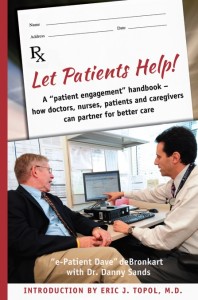The proximity of the health services is a highly appreciated and defended value; not in vain regional hospitals have proliferated throughout the country as an essential instrument for territorial balance. The local organizations and the small communities have understood this and have protested fiercely against any councillor who has dared to suggest that it might be convenient to close some low-performing service. It seems generally accepted therefore; that the proximity of services is a value that favours the accessibility for dispersed populations and improves the equity of the system. However, it doesn’t escape anyone that too often, maintaining the quality of certain services when located far from the centres of reference is a challenge in itself.

This reflection has come to my mind after reading an article in the New England Journal of Medicine by Michael Porter and Thomas Lee "
Why strategy matters now". One may rightly say that this source is a little far-fetched for the dilemma that I raised, especially and fortunately because the problems of our health system are very different from those of the North American system, but in return, I’ll insist that after rereading it, it seemed to me that the recipe of the two authors from Harvard can be useful in offering rational elements to the controversy around the proximity – an issue that always seems to be politicized.
Let's consider Porter&Lee’s 6 strategic proposals that can be tailored to our concerns:
1. The main objective of any strategy must be the value it brings
To give a couple of examples, in a strategy of chronic disease, community work is a value in itself; on the other hand, for the infarction code, the efficacy of clinical action is the tracer axis, so the planner must know how to balance the dispersion of the services with the excellence of the results.
2. Organization charts must be redesigned according to the needs of patients and processes
We ought to abandon the current organizational charts based on bodies, systems and levels of care and advance to multidisciplinary teams that are organized according to the needs of patients, who are responsible globally for clinical processes and that are accountable according to the value obtained ( remember that Porter’s value is the relation between clinical results and costs).
3. The portfolio of services must be adjusted to the organization’s capabilities
In order to fulfil the main objective, hospitals must identify the services in which they are able to provide value, declining to maintain an offer that doesn’t correspond to their real possibilities or to the desired results. This adjustment is valid both for the regional hospitals’ historical difficulties in retaining talent, as well as for mid-level centres that despite all reason, focus on tertiarism as a sign of identity.
4. Clinical management units should be oriented to clinical effectiveness
The multidisciplinary teams must evolve towards "integrated" clinical management units when they have the capacity to approach a sufficient number of patients and the results obtained are good enough. In this situation, the units must be endowed with the essential resources, and even financing models based on adjusted capital or objectives, as the case may be.
5. Synergies can solve many of the current problems
To overcome the problems of excess installed capacity, duplicities, or the desire to act beyond the real possibilities, organizations must have the vision of generating synergies to solve these imbalances. Concentrating services to a single point or sharing professional teams are two strategies that, when they have been implemented rightly, yielded good results.
6. The referring hospitals must elaborate more strategies by looking at the territory
We ought to further deepen the current strategy of opening referring hospitals in the territory, with all kinds of agreements with hospitals of lower hierarchies. In the same way that it’s not good for regional hospitals to practice tertiarism, it’s also unreasonable for referring centres to dedicate their costly structures to solving case-mix typical of community centres.
It would be advisable that we take advantage of the lessons of Michael Porter and Thomas Lee in order to overcome the dilemma of proximity versus quality, generating more professional and social debate about the value of health services, since it’s pointless to have an emergency unit at every corner if we can’t support them, every day of the week and all hours of the day (and night), with qualified professionals.
Jordi Varela
Editor
































